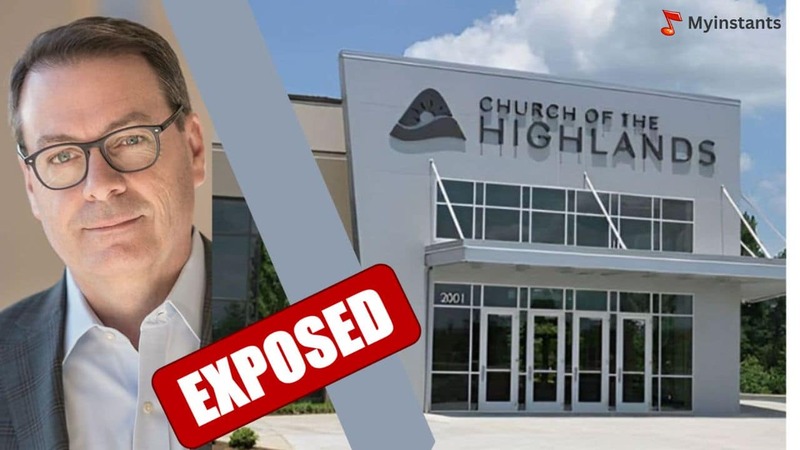Introduction
The Church of the Highlands, a megachurch based in Birmingham, Alabama, has garnered attention and admiration from thousands. With its rapid growth, modern worship style, and extensive community outreach, it has become one of the largest congregations in the United States. However, along with its success, the church has faced scrutiny and controversy. This article delves into the history, beliefs, practices, and controversies surrounding the Church of the Highlands, offering a comprehensive view of this influential institution.
Table of Contents
ToggleThe Origins of Church of the Highlands
Founding and Growth
The Church of the Highlands was founded in 2001 by Pastor Chris Hodges, with the aim of creating a church that would reach people far from God. From its humble beginnings in a high school auditorium, the church has grown exponentially, now boasting over 20 campuses across Alabama and an average weekly attendance of more than 50,000 people. The church’s growth has been fueled by its innovative approach to ministry, including the use of technology, modern worship music, and a focus on small groups.
Core Beliefs and Teachings
The Church of the Highlands aligns itself with evangelical Christian doctrine. It emphasizes the authority of the Bible, the importance of a personal relationship with Jesus Christ, and the role of the Holy Spirit in the life of believers. The church also places a strong emphasis on outreach and service, encouraging members to live out their faith by serving others in their communities.
The Impact of Church of the Highlands
Community Outreach and Social Programs
One of the defining features of the Church of the Highlands is its commitment to community service. The church runs a variety of programs aimed at addressing social issues such as poverty, addiction, and education. Through its Dream Centers, the church provides food, clothing, and medical care to those in need. Additionally, the church’s outreach efforts extend beyond Alabama, with missions and partnerships in various parts of the world.
Influence on Modern Worship
The Church of the Highlands has played a significant role in shaping modern worship practices in the evangelical community. Its services are characterized by contemporary music, dynamic preaching, and an emphasis on creating an engaging and welcoming environment. This approach has resonated with many, particularly younger generations, and has contributed to the church’s rapid growth.
Controversies and Criticisms
Leadership and Financial Transparency
Despite its success, the Church of the Highlands has not been without controversy. Critics have raised concerns about the church’s leadership structure, financial transparency, and the lifestyle of its senior pastors. Some have questioned the church’s decision-making processes and the extent to which members have a say in the governance of the church. Additionally, the church’s financial practices, including its handling of donations and the compensation of its leaders, have come under scrutiny.
Allegations of Racial Insensitivity
In recent years, the Church of the Highlands has faced allegations of racial insensitivity, particularly in light of comments and actions by its leadership. These incidents have sparked debates about the church’s commitment to diversity and inclusion. While the church has taken steps to address these concerns, including public apologies and changes in leadership, the controversy has led to a broader conversation about race within the church.
The Role of Technology and Media
Online Presence and Digital Ministry
The Church of the Highlands has embraced technology as a tool for ministry. The church’s online presence, including its website, social media channels, and livestreamed services, allows it to reach a global audience. This digital ministry has been particularly important during the COVID-19 pandemic, as it enabled the church to continue its services and maintain connection with its members despite physical distancing measures.
Impact of Media Coverage
Media coverage has played a significant role in shaping public perception of the Church of the Highlands. While the church has been praised for its innovative approach to ministry and its positive impact on communities, it has also been the subject of critical reporting. The church’s response to media scrutiny, including its handling of controversies and its communication strategies, has influenced how it is viewed by the broader public.
The Future of Church of the Highlands
Challenges and Opportunities
As the Church of the Highlands continues to grow, it faces both challenges and opportunities. The church must navigate the complexities of managing a large and diverse congregation, addressing the needs of its members, and maintaining its commitment to outreach and service. At the same time, the church has the opportunity to continue its influence on modern worship practices and expand its impact both locally and globally.
The Role of Leadership
The future of the Church of the Highlands will largely depend on its leadership. As the church grows and evolves, its leaders will need to address the concerns and criticisms that have been raised, while also staying true to the church’s mission and values. The church’s ability to adapt to changing cultural and social dynamics will be crucial in determining its long-term success.
Conclusion
The Church of the Highlands is a complex and influential institution that has made a significant impact on the religious landscape in the United States. While it has achieved remarkable success and has positively impacted many lives, it has also faced criticism and controversy. Understanding the truth behind the Church of the Highlands requires a nuanced and balanced perspective, one that considers both its achievements and its challenges. As the church continues to grow and evolve, it will be important to watch how it addresses these issues and how it continues to influence the broader evangelical community.
